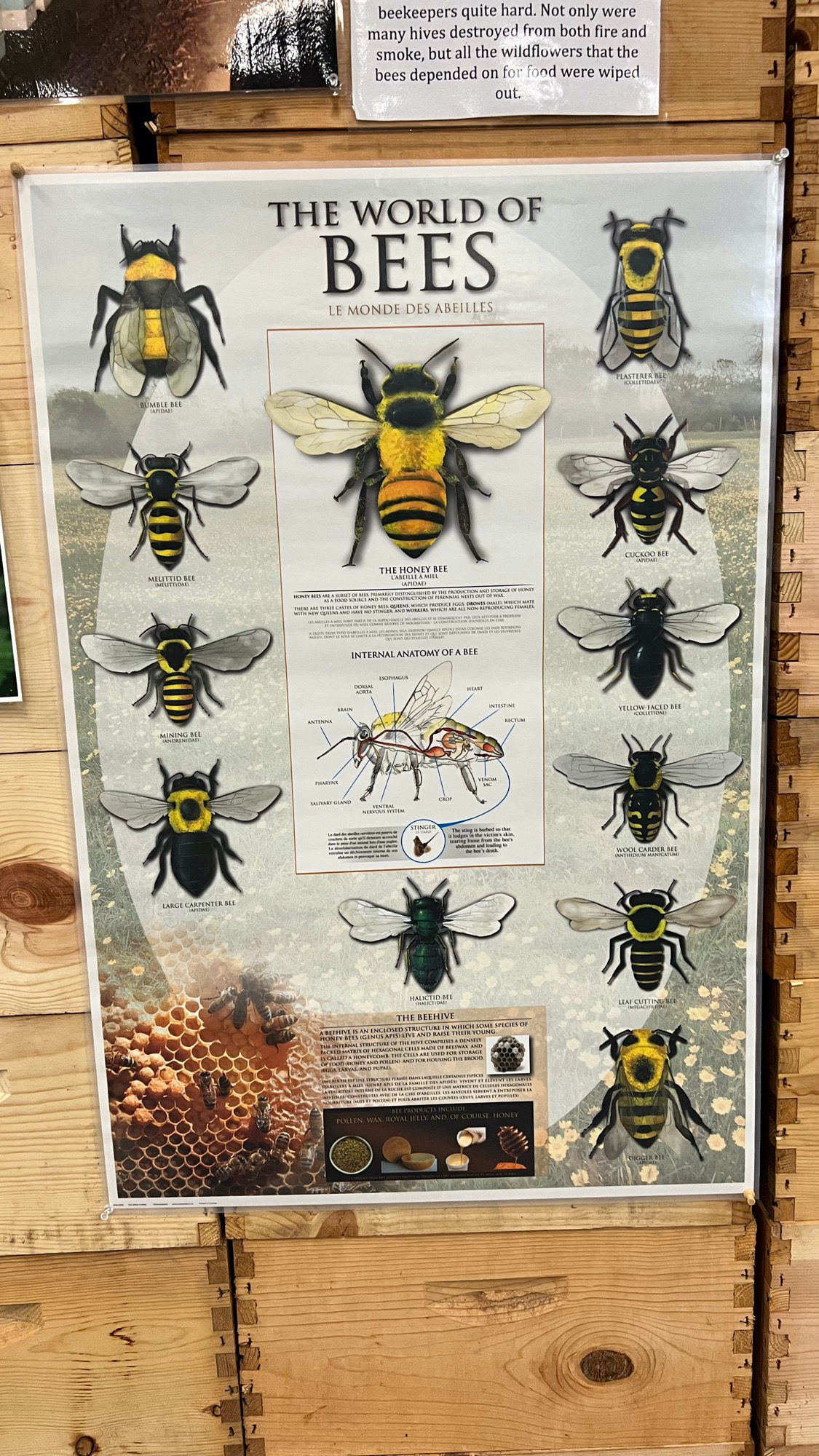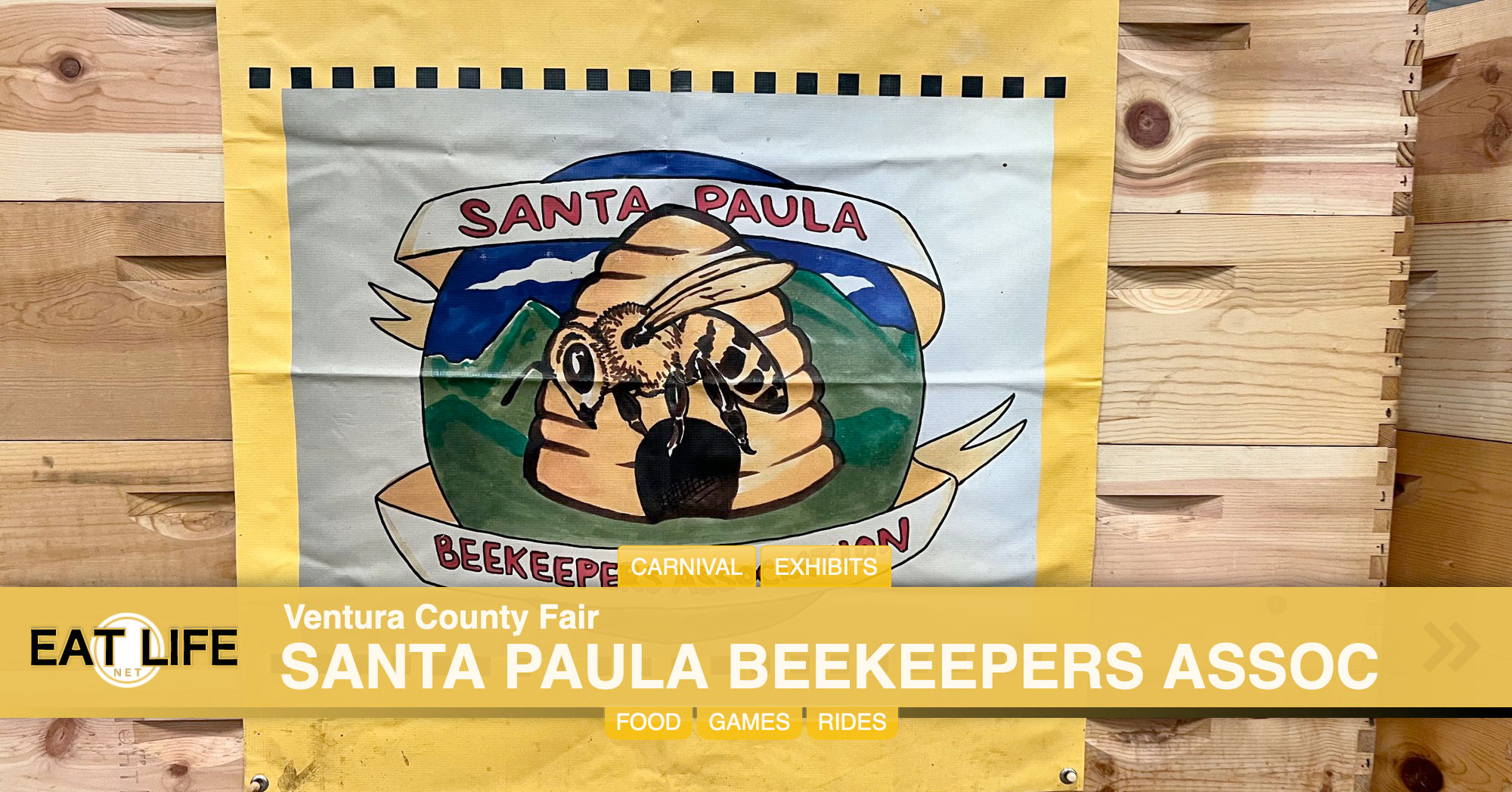Santa Paula Beekeepers Assoc
Helping People Help Bees
Updated October 2024
Posted September 2022

The World of Bees
Le Monde Des Abeilles
Le Monde Des Abeilles
- The Honey Bee L'abeille A Miel (apidae)
- Honey Bees are a subset of bees, primarily distinguished by the production and storage of honey as a food source and the construction of perennial nests out of wax.
- There are three castes of Honey Bees:
- Queens which produce eggs
- Drones (males) which mate with new queens and have no stinger
- Workers which are all non-reproducing females
- Bumble Bee (apidae)
- Melittid Bee (melittidae)
- Mining Bee (andrenidae)
- Large Carpenter Bee (apidae
- Plasterer Bee (colletidae)
- Cuckoo Bee (apidae)
- Yellow-Faced Beed (colletidae)
- Wool Carder Bee (anthidium manicatum)
- Leaf Cutting Bee (megachilidae)
- Halictid Bee (halictidae)
- Digger Bee (apidae)
Internal Anatomy of a Bee
- Antenna
- Brain
- Dorsal Aorta
- Esophagus
- Heart
- Intestine
- Rectum
- Stinger
The sting is barbed so that it lodges in the victim's skin, tearing loose from the bee's abdomen and leading to the bee's death - Venom Sac
- Crop
- Ventral Nervous System
- Salivary Gland
- Pharynx
The Beehive
A beehive is an enclosed structure in which some species of honey bees (genus apis) live and raise their young.
The internal structure of the hive compresses a densely packed matrix of hexagonal cells made of beeswax and is called a honeycomb. The cells are used for storage of food (honey and pollen) and for housing the brood (eggs, larvae, and pupai).
Bee Products Include
- Pollen
- Wax
- Royal Jelly
- Honey





